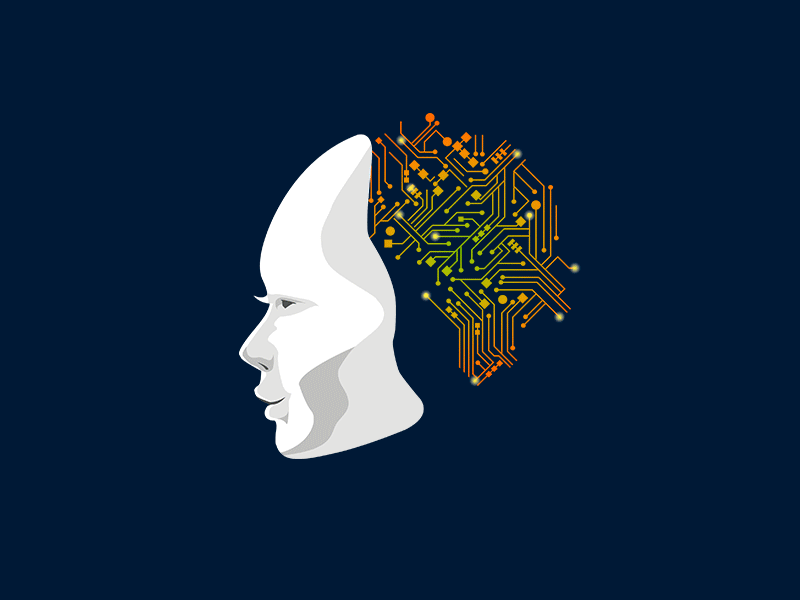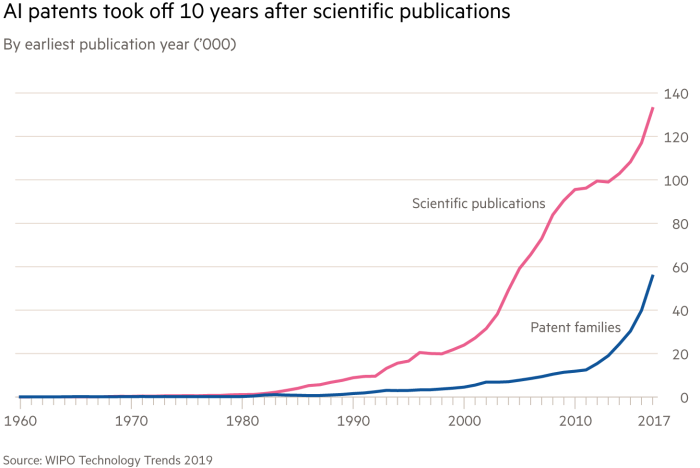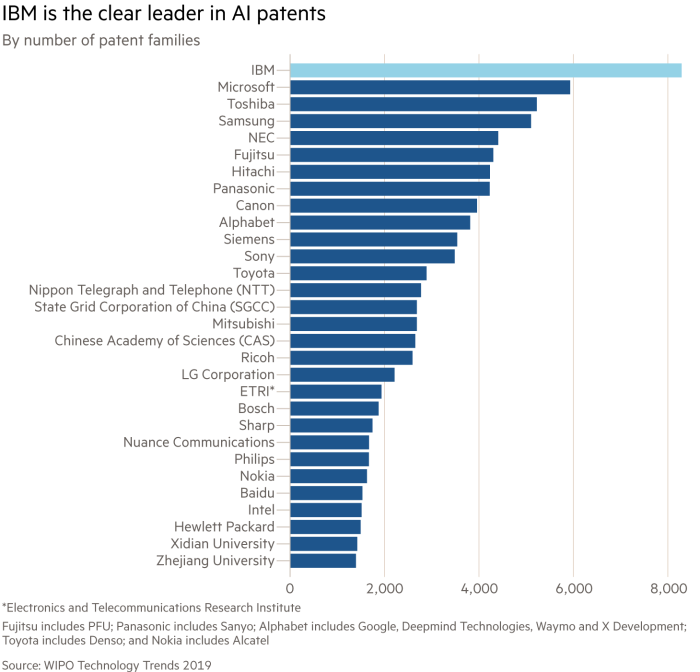
AI-related patents applications continue to soar and with arise new challenges for the USPTO. In a recent report from the US Patent and Trademark Office (USPTO) called “Inventing AI: Tracing the diffusion of artificial intelligence with US patents” the number of AI patent applications doubled from 30,000 to 60,000 since 2002 until 2018. At an international level, the number of AI-related patent applications worldwide rose from 18,995 in 2013 to 55,660 in 2017.

According to the WIPO, two US companies are holding the largest AI patent portfolios: IBM (8,290) followed by Microsoft (5,930) with a group of Japanese and Korean companies close behind.

While AI-related innovation seems to thrive, one of the major issues appears to be defining what is AI to accurately classify patent and route them to the domain expert reviewer. In its “Inventing AI” report, the USPTO rejected the National Institute of Standards and Technology (NIST) definition of AI:
“software and/or hardware that can learn to solve complex problems, make predictions or undertake tasks that require human-like sensing (such as vision, speech, and touch), perception, cognition, planning, learning, communication, or physical action.”
However, the patent office rejected the definition as not specific enough for patent applications. Instead, they propose to define AI as “comprising one or more of eight component technologies. These components span software, hardware, and applications, and a single patent document may contain multiple AI component technologies.”
Those eight component technologies are:
- Knowledge processing — representing and deriving facts about the world and using this information in automated systems
- Planning/control — contains processes to identify, create, and execute activities to achieve specified goals.
- Computer vision — extracts and understands information from images and videos.
- Speech recognition — techniques to understand a sequence of words given an acoustic signal
- AI hardware — physical computer components designed to meet the need for considerable computing power for AI through increased processing efficiency and/or speed
- Evolutionary computation — contains a set of computational routines using aspects of nature and, specifically, evolution.
- Natural language processing — understanding and using data encoded in written language
- Machine learning — contains a broad class of computational models that learn from data.
Armed with the above definition, the USPTO is soldiering on; however, some issues remains. By example, there is a certain tension between the desire to maintain confidentiality and ownership of data and algorithms and the necessity of making available data inputs and outputs and AI developments for patenting purpose. One must be careful with disclosure as access to these pieces of information can result in a loss of trade secret protection and control over data and AI. As a result, new processes and regulation need to be put in place to balance the need for transparency while respecting the need for protecting business trade secrets. As you can see, AI is not only revolutionising the economy but also pushes the boundaries of IP law and regulation.
November 07, 2020